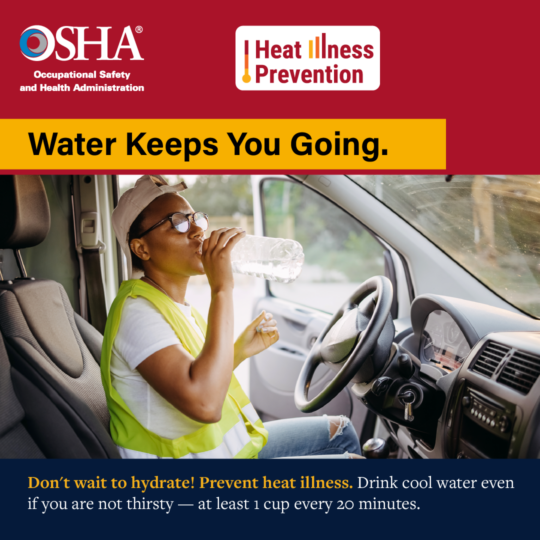
Raising Heat Hazard Awareness
OSHA sponsors a ‘Beat the Heat’ Contest to raise awareness about the hazards of heat exposure in indoor and outdoor workplaces. Moreover, they held an informational webinar for the contest on May 16th. If you would like to watch the recording, you can click here. In addition, the contest welcomes stakeholders nationwide, including businesses, unions, educational institutions, government entities, and individuals. Participants must create an awareness tool, such as an infographic, training curriculum, poster, logo, etc., to improve heat hazard recognition among employers and workers in workplaces.
The contest is open NOW and the deadline for entries is June 9.
For more information, visit OSHA’s Beat the Heat Contest webpage.
Hot Tips to Stay Safe and “Beat the Heat”
Workers should be trained to recognize the symptoms of heat illness in themselves and the signs in others. Workers should not try to diagnose the illness itself (e.g., heat stroke vs. heat exhaustion) but instead be able to recognize that it’s happening and take immediate action.
Use this infographic from OSHA to train your workers to identify the signs and symptoms of heat illness and the actions to take in response to them. Don’t wait until it’s too late; train your workers today!
Encourage Hydration to “Beat the Heat!”
The redesigned infographic, Water Keeps You Going, is now available for download from OSHA’s Heat Illness Campaign website. You have a choice of 17 different images that encompass both indoor and outdoor worksites. Moreover, we encourage you to post one in your workplace today to promote hydration among workers.

NACOSH Meeting
The National Advisory Committee on Occupational Safety and Health (NACOSH) has scheduled a full committee meeting on May 31 from 9:00 A.M. to 4:00 P.M. ET. Additionally, we are inviting the public to participate virtually in a listen-only mode. Furthermore, we will provide simultaneous Spanish audio interpretation via WebEx. To register, please visit the Highlights section of the NACOSH webpage.

